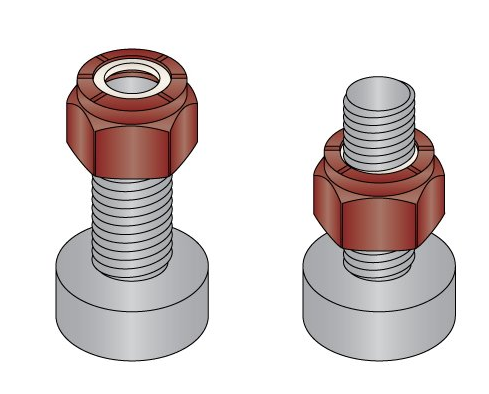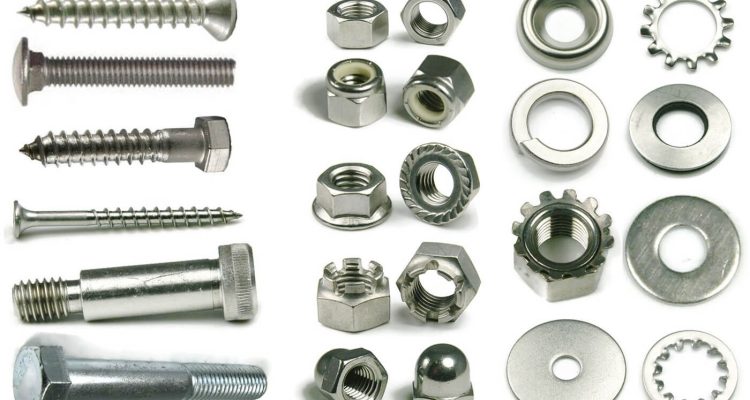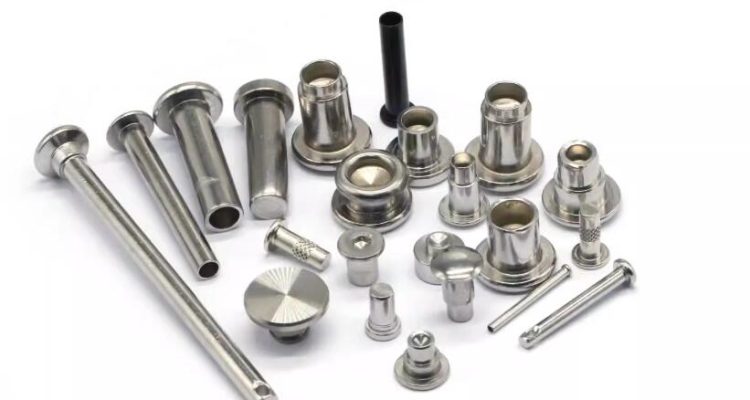
What is the difference between screw on and bolt on holds
Screw-on holds attach with 2-3 wood screws, supporting about 100-150 pounds, making them ideal for smaller holds and versatile placements on wood walls. Bolt-on holds, secured by a central bolt and T-nut, can handle up to 250 pounds, offering greater stability for larger holds and dynamic moves on busy gym walls.
Screw-On Overview
Screw-on climbing holds are ideal for climbers who need flexibility in the placement of holds on their wall and work well for the budget-conscious. While most bolt-on climbing holds require T-nuts and bolts for mounting, screw-on holds only take wood screws to fasten directly into a wall. This enables climbers to place holds in nearly any position, regardless of any pre-existing T-nut patterns. Screw-on holds are thus particularly popular for home wall setups. For example, a house wall may take about 50-100 holds, depending on the size of the area and style of climbing. With screw-on holds, which come in packs of 10 for approximately $20 to $30, a climber could cover an entire wall for $100-$300. In comparison, bolt-on holds of a similar quality and quantity could raise the budget up to $200-$400, mostly due to the added cost of T-nuts and bolts.
Screw-on holds require very little time for setting up and only a few installation tools. For the average climber, it would take less than a minute to fit a hold using a common power drill and wood screws. A typical 4×8-foot plywood panel—the usual size for home climbing walls—could take about 20-30 small screw-on holds. Assuming that a climber is using 1.5-inch wood screws, the cost of each screw is approximately $0.10. Thus, the cost of screws for an entire panel will be around $6-$9. Comparing this to bolt-on holds, T-nuts cost about $0.25 each, which will add up if covering multiple panels. For a typical install of about 100 holds on a wall, screw-on holds might save approximately $20-$30 in hardware costs alone.
Screw-on holds are fitting for specific uses due to durability and load-bearing capacity, although it has its own limitations. Basically, each screw-on hold secures with two or three wood screws, thereby distributing the force across the hold and the wall. Small screw-on holds may support, especially when used as footholds, weights up to 50 pounds per screw. That is to say, a hold attached with three screws could theoretically support up to 150 pounds on a vertical wall; this is safer to assume at about 100 pounds, taking into account the dynamics of climbing. This strength suits smaller holds and foot placements well. Larger holds or holds seeing higher impact may see the most benefit from robust support, such as bolt-on holds that can handle upwards of 200 pounds with one bolt and T-nut.
Screw-on holds remain highly in demand, especially for budget-conscious or custom wall setups. An example might be an 8×12-foot bouldering wall, which is very typical of a small home wall. This would require 60-80 holds for varied routes. If half of these holds are screw-on, the savings in hardware cost is considerable, and the placement freedom pays great dividends. Spacing these holds evenly across the wall without relying on T-nut pre-patterns lets climbers create more intricate routes. Besides, screw-on holds work particularly well on complex wall shapes, like volumes or angled panels. For example, adding five screw-on footholds to a volume can be as low as $10 while using bolt-ons on that same feature costs more and seriously limits one’s placement versatility.

Installation Tips
The installation of screw-on holds themselves is rather easy, but spacing, material surface, and screw choice all have to be done with due care to maximize safety and durability. When placing screw-on holds into a typical 4×8-foot plywood panel, you will want to distribute the holds evenly. For a beginner or intermediate climbing setup, you may want to use roughly 20 to 30 holds per panel, depending on wall angle and desired route density. Spacing holds no closer than 6 inches avoids overcrowding and makes routes less stressful to train on. If your panel is mounted at an angle, like a 30-degree overhang, you may want to reduce hold density to about 15-20 holds per panel, as this will help you avoid unnecessary panel and screw strain.
The type of screw to be used in attaching screw-on holds makes a difference in stability and life. For most of the home climbing walls made using ¾-inch plywood, 1.5-inch wood screws are just what one needs. These usually come at approximately $0.10 each and hence, it would be economically viable to stock them in large numbers, should one intend to change routes more often than not. Since on average, each hold would require 2-3 screws, a wall containing 100 holds would require approximately 200-300 screws, costing about $20-$30 for screws alone. Screws under 1.5 inches in length can result in weak holding strength, while longer screws may hit the other side of thinner plywood. Secondly, it is worth considering that good-quality wood screws made from stainless steel or coated to resist rust are worth an added minimal cost—usually up to $0.15 each—in moist conditions, due to the fact that they will not weaken due to corrosion.
Wall material and thickness become very important for stable installation. While ¾-inch plywood is a standard, 5/8-inch plywood is the bare minimum recommended for screw-on holds. That is to provide enough thickness for the screws to take hold without any risk of the material buckling or detaching anytime soon. If softer woods such as pine are used, do not place high-traffic holds in areas that may warp or crack under pressure. For an average 8- x 12-foot wall with two plywood sheets wide, screwing on panels every 6 inches around the edges and in two central rows will prevent warping, even in high use. That is roughly 40 screws per panel, or about 80 total, adding roughly $8-$12 to the overall material cost but greatly enhancing stability.
The final testing of each hold after installation ensures that they are secure and safe for use. Pro climbing instructors suggest the following for every hold: apply a slow pull test in multiple directions to check stability. This correctly installed screw-on hold on a stable surface should be able to resist at least 50 pounds of direct pressure per screw, so a 3-screw hold should easily handle 150 pounds. It is also worth investing in a spring scale, at about $20 for a first home wall, which will allow the user to test hold stability under pressure. When they are carefully installed and thoroughly tested, screw-on holds can last a number of years on a home wall, with low maintenance, and provide a strong and flexible training setup for climbers at any level.

Bolt-On Benefits
Bolt-on climbing holds are known for their superior stability and load-bearing capacity, making them the preferred choice for most climbing gyms and commercial walls. They attach via a central bolt that connects with a T-nut embedded within the wall, providing a strong, even hold resistant to large weights. For instance, a single bolt-on hold can usually support about 250 pounds of force, compared to the 100 to 150 pounds typically supported by screw-on holds. This strength difference makes bolt-ons ideal for larger holds and overhanging walls where climbers exert greater force. Consequently, bolt-ons are the default choice in commercial climbing gyms with routes meant for adults, ensuring a safer experience even with high traffic and demanding routes.
Another advantage of bolt-on holds is their reusability. T-nuts make it easy to remove and reposition holds without damaging the wall surface, which is particularly beneficial for gyms that change routes frequently, often every 1-2 months. For example, a typical 8×12-foot wall with about 50 holds can be reconfigured quickly and safely using a bolt-on system. In contrast, screw-on holds often require new screw holes with each adjustment, which can affect wall integrity over time. A complete reconfiguration of bolt-on holds might only take a few hours, whereas relocating screw-ons could take twice as long, especially if previous screw holes need patching or reinforcement.
Bolt-ons also offer greater diversity in hold shapes and sizes than screw-ons, accommodating larger volumes or feature holds that can weigh several pounds. Some holds designed for overhanging or roof sections weigh 5-10 pounds each and rely on bolt attachments for safe support during high-impact maneuvers like dynamic moves. The standard bolt size—often 10mm—ensures compatibility across holds from different manufacturers, allowing route setters to include unique holds that challenge both technique and strength.

Screw-On Benefits
For climbers setting up a home wall on a budget, screw-on holds offer a much more affordable alternative to bolt-ons. For instance, small sets of 10 screw-on holds cost around $20 to $30, whereas bolt-on sets can cost $50 to $70 due to the added hardware like bolts and T-nuts. For a home wall with around 50 holds, opting for screw-ons could save approximately $100-$200. Additionally, wood screws for screw-ons are about $0.10 each, whereas bolts and T-nuts for bolt-ons could cost $50 to $70 for the same setup.
A major advantage of screw-on holds is their flexibility in placement, as they don’t require T-nuts. This is ideal for dense or highly customized climbing routes that may not align with a standard T-nut grid. For example, on a 4×8-foot sheet home wall, climbers can place screw-ons within inches of each other to create technical bouldering problems that challenge precision and technique. Bolt-ons, restricted by the T-nut pattern, are limited in hold placement options. Screw-ons allow for greater creativity and are perfect for custom or training walls where specific spacing and placement matter.
Screw-ons also offer durability and ease of installation, especially on non-traditional surfaces like volumes—angled features added to walls for variety. By fastening with multiple wood screws, screw-ons distribute load evenly across the hold, making them ideal for complex features. For instance, a small volume can support multiple screw-on holds on different faces, allowing for varied climbing experiences without requiring alignment with T-nuts. Installation is also quick, with each hold taking about a minute using a standard drill. A 100-hold wall can be set up within hours, while aligning T-nuts and bolts for bolt-on systems might take longer.
When to Use Bolt-Ons
Bolt-on climbing holds are best suited for durability, strength, and load-bearing walls. They are an excellent option for high-impact climbing routes and facilities that see high volumes of use because they securely attach via a bolt-and-T-nut system. Examples include commercial climbing gyms and school or sports center facilities looking to increase durability by adding bolt-ons. A single properly mounted bolt-on hold can withstand 250 pounds of force, making it ideal for overhangs or roofs where dynamic movements apply considerable stress. In comparison, screw-on holds can only support 100 to 150 pounds, giving bolt-ons a wide margin of safety, particularly on walls where climbers make jumps or other explosive moves.
Route Changes are common in gyms to maintain novelty for customers, and bolt-ons are ideal since they are very reusable. In a typical gym, routes are reset every 1-2 months, involving removal and repositioning of holds to create new routes. With bolt-ons, which are attached to T-nuts in the wall, it’s easy to change holds without causing surface damage. Reorganizing routes on a 4×8-foot panel with around 30 bolt-on holds is quick, taking less than half the time needed to rearrange screw-ons. This adaptability preserves wall longevity and minimizes repair costs. In comparison, screw-on holds leave holes with each move, potentially weakening the surface over time in settings where adaptability is crucial.
Overhanging walls and roofs subject holds to extreme stress and are best suited to bolt-on holds. Due to the T-nut system, bolt-ons distribute weight through the wall more efficiently than screw-ons, which rely on wood screws. For instance, a 45-degree overhang in an indoor bouldering facility might see 200 pounds of force on a single hold. With bolt-on holds, this force is safely transferred through the bolt and T-nut, reducing detachment risks. In contrast, screw-on holds may loosen or detach under such pressure, posing safety risks. Therefore, in walls with significant angles and roofs where falls or heavy use are expected, bolt-ons should be used to prioritize safety and stability.
Best for Screw-Ons
Screw-on holds work best for home walls or training setups where flexibility in hold placement and budget are key. For instance, an 8×12-foot home wall with 50-80 screw-on holds can provide a dense training environment at a lower cost. Packs of 10 screw-on holds are $20-$30, allowing a wall builder to cover large areas affordably. Outfitting a wall with 80 screw-on holds would cost $160-$240, saving potentially hundreds compared to bolt-on options. This makes screw-ons perfect for beginning climbers or families setting up a wall for recreational use.
Screw-on holds offer greater hold placement flexibility since they don’t require T-nuts. This allows holds to be installed on any wood surface without limitations, ideal for compact or nonstandard walls where T-nut grids might limit hold density. For example, a 4×8-foot wall can easily be outfitted with 20-30 screw-on holds, enabling users to design routes for strength and technique without needing a T-nut pattern. Screw-ons are also ideal for small handholds or footholds, especially on training walls with close placements for finger strength or endurance training.
Screw-on holds work excellently on volumes and features where T-nut installation isn’t possible. Volumes are three-dimensional shapes added to climbing walls to create variety and challenge in routes. These volumes often lack T-nuts for screw-on holds, so the ability to install holds in multiple directions significantly increases their utility. For example, a single volume might support 5-10 screw-on holds, enabling trainees to practice complex, multidirectional movements. Wood screws for installing holds cost $0.10 each, so adding 5 holds to a volume costs about $0.50. This versatility on various surfaces makes screw-on holds particularly valuable in training environments where climbers seek to replicate varied terrains.
Strength and Stability
The strength and stability of climbing holds are major determinants in safety concerns, especially for vertical and overhanging walls. Bolt-on holds have the advantage of bearing higher loads because they rely on a heavy-duty bolt that fits into a T-nut installed in the climbing wall. This attachment system allows bolt-on holds to bear up to 250 pounds, making them suitable for dynamic movements, overhangs, and routes that require full-body weight—or even more during movements—on a single hold. Screw-on holds, by contrast, rely on several smaller screws rather than one robust bolt, usually supporting about 100-150 pounds per hold depending on wall material and the number of screws involved. Therefore, in gyms and walls where higher impact moves are common, bolt-on holds are preferred because they ensure strength and stability under intense use.
Screw-on holds attach differently, distributing force through two or three wood screws and are best suited for smaller and lighter holds that bear less weight. A standard screw-on hold attached with three 1.5-inch wood screws can support approximately 150 pounds when evenly spread across the hold. This setup is ideal for footholds or small handholds on a vertical wall, where less force is applied. In an overhang, however, the force of gravity increases, lowering the effective load-carrying capacity of the screw-on hold to about 75 to 100 pounds. Compared to bolt-ons, large holds or heavy load conditions may be less reliable with screw-on holds since wood screws do not have the same holding power as the central through-bolt system of bolt-ons.
The material and thickness of the climbing wall influence the strength and stability of both screw-on and bolt-on holds. For maximum strength with both hold types, ¾-inch plywood is ideal. Bolt-on holds also benefit from the added security of the T-nut, which provides a highly stable anchor point within the plywood. Screw-on holds, however, rely directly on the surface they attach to; if the wood becomes warped or weakened, their stability decreases. On a standard 4×8-foot plywood panel, the maximum distance between screw-on holds can be 6-8 inches apart to allow for optimal grip distribution without compromising wall stability. Under continuous heavy use, especially in high-traffic or overhanging sections, screw-on holds may loosen or damage the wall over time, potentially requiring maintenance or replacement.



